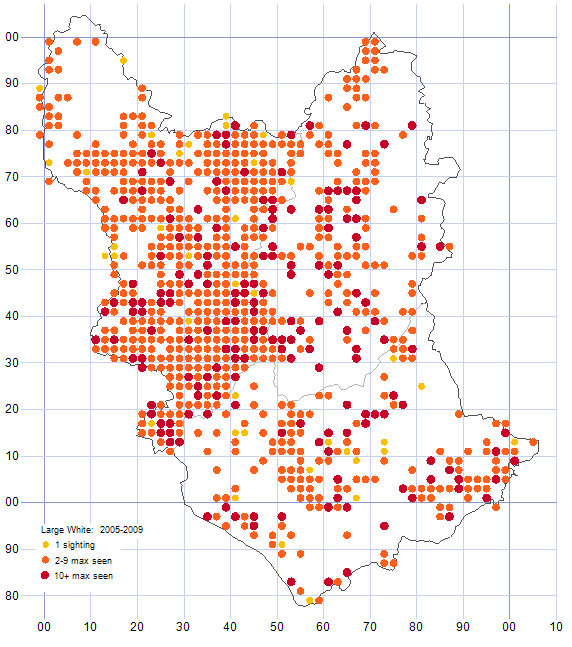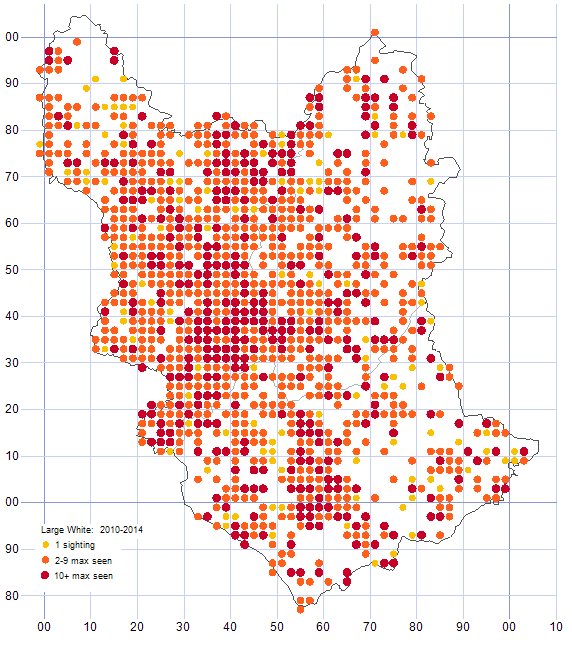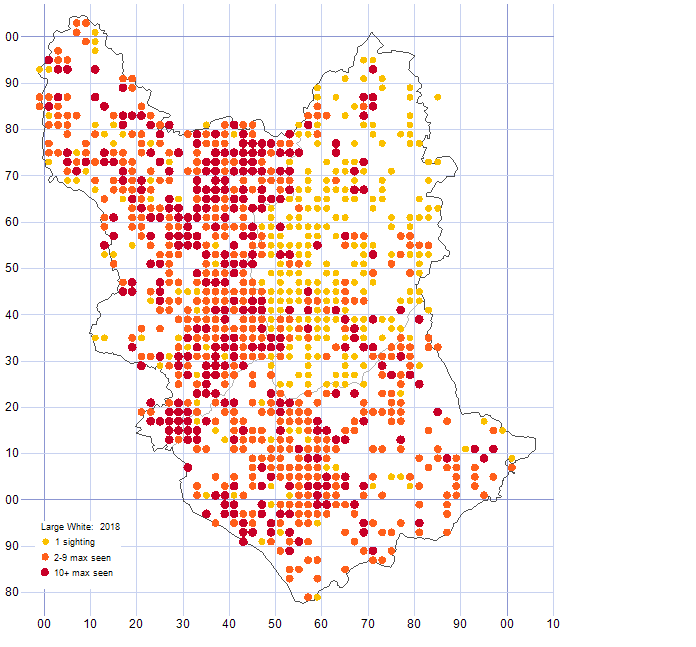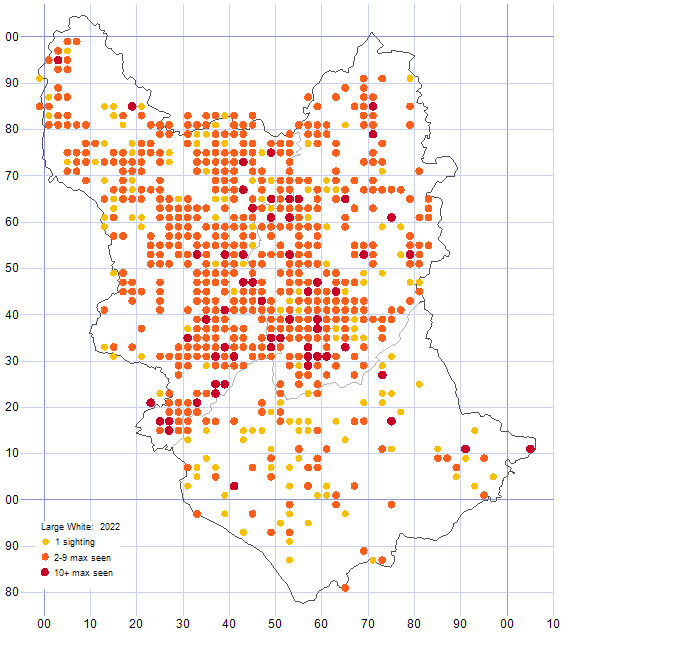
Large White Pieris brassicae
Habitat
The Large White is found almost anywhere, but is particularly associated with gardens, farmland and allotments where cabbages and other brassica plants grow.
Identification
It is the largest of the three common British white species, and is identified by its blacker wing-tips and bolder spots, particularly on the female. Second generation butterflies are considerably larger than first brood individuals.
Flight times
Adults can be seen on the wing any time from February to November. There are usually two generations a year, peaking in May and late July/early August. In warm summers a third brood may be seen in late September and early October.
Food plants
Larval food plants include a whole range of brassicas, including cabbages, kale and brussels sprouts.

Distribution Maps
2005-2009

2010-14

2015-19

2020-24

2015

| No of tetrads | 863 |
|---|---|
| First sighting | 04/04/2015 |
| Last sighting | 31/10/2015 |
2016

| No of tetrads | 774 |
|---|---|
| First sighting | 25/03/2016 |
| Last sighting | 16/10/2016 |
2017

| No of tetrads | 765 |
|---|---|
| First sighting | 25/03/2017 |
| Last sighting | 24/10/2017 |
2018

| No of tetrads | 1007 |
|---|---|
| First sighting | 25/03/2018 |
| Last sighting | 26/10/2018 |
2019

| No of tetrads | 1005 |
|---|---|
| First sighting | 26/02/2019 |
| Last sighting | 30/10/2019 |
2020

| No of tetrads | 1129 |
|---|---|
| First sighting | 14/03/2020 |
| Last sighting | 05/11/2020 |
2021

| No of tetrads | 1009 |
|---|---|
| First sighting | 07/03/2021 |
| Last sighting | 15/10/2021 |
2022

| No of tetrads | 880 |
|---|---|
| First sighting | 17/02/2022 |
| Last sighting | 10/09/2022 |
2023

| No of tetrads | 1001 |
|---|---|
| First sighting | 23/02/2023 |
| Last sighting | 03/12/2023 |
2024

| No of tetrads | 985 |
|---|---|
| First sighting | 29/03/2024 |
| Last sighting | 22/10/2024 |
Photo Gallery
Similar or Easily Confused Species and ID Hints
Small White Pieris rapae
Small White are usually smaller and have paler and less extensive wing-tips than the Large White.
Brimstone Gonepteryx rhamni
A female Brimstone flying past could be mistaken for a pale or faded Large White. The black wing-tips of the Large White are the key to look for, plus the female Brimstone has a slight greenish colouration. The Brimstone always rests with its wings closed.





